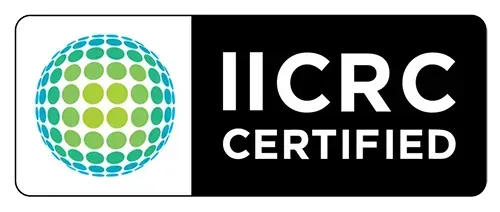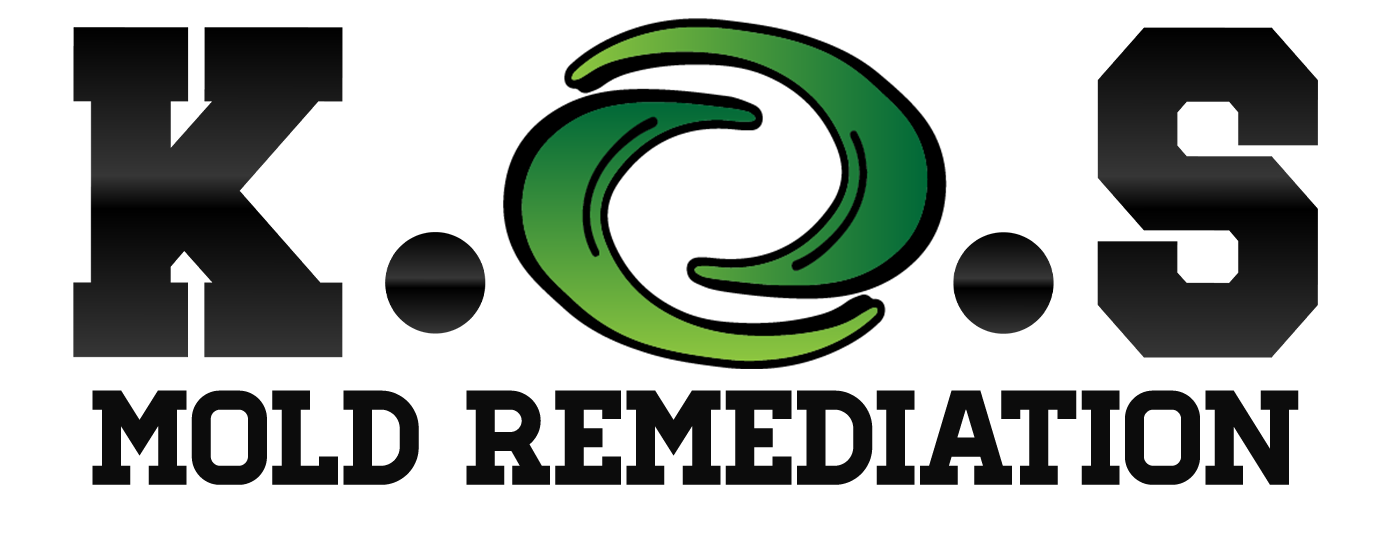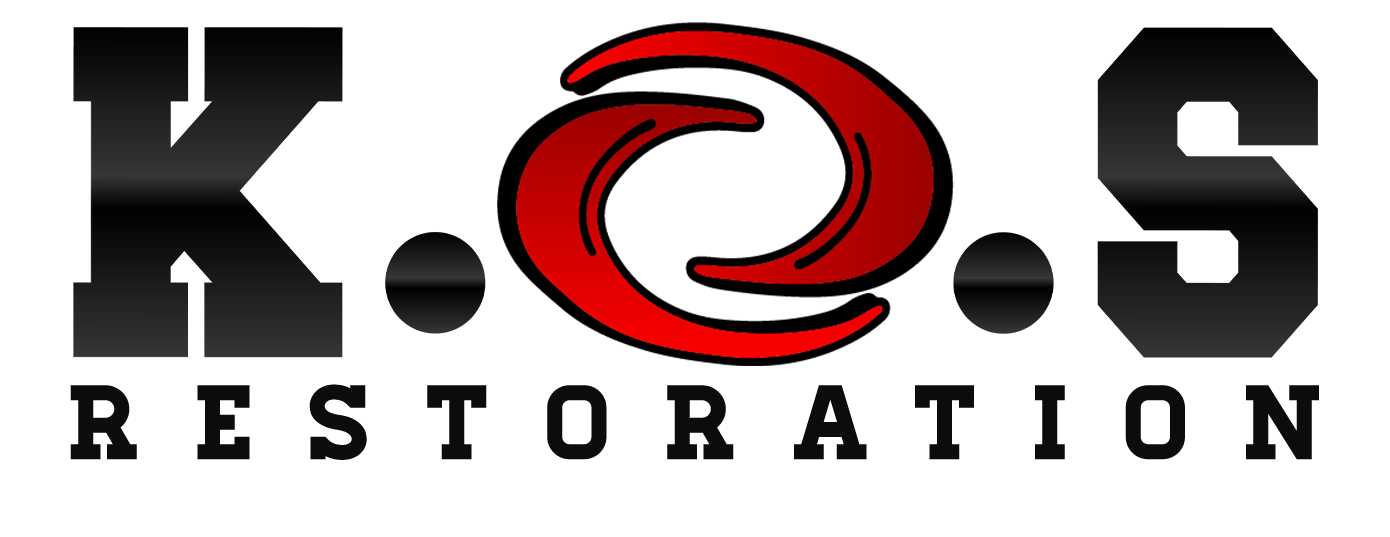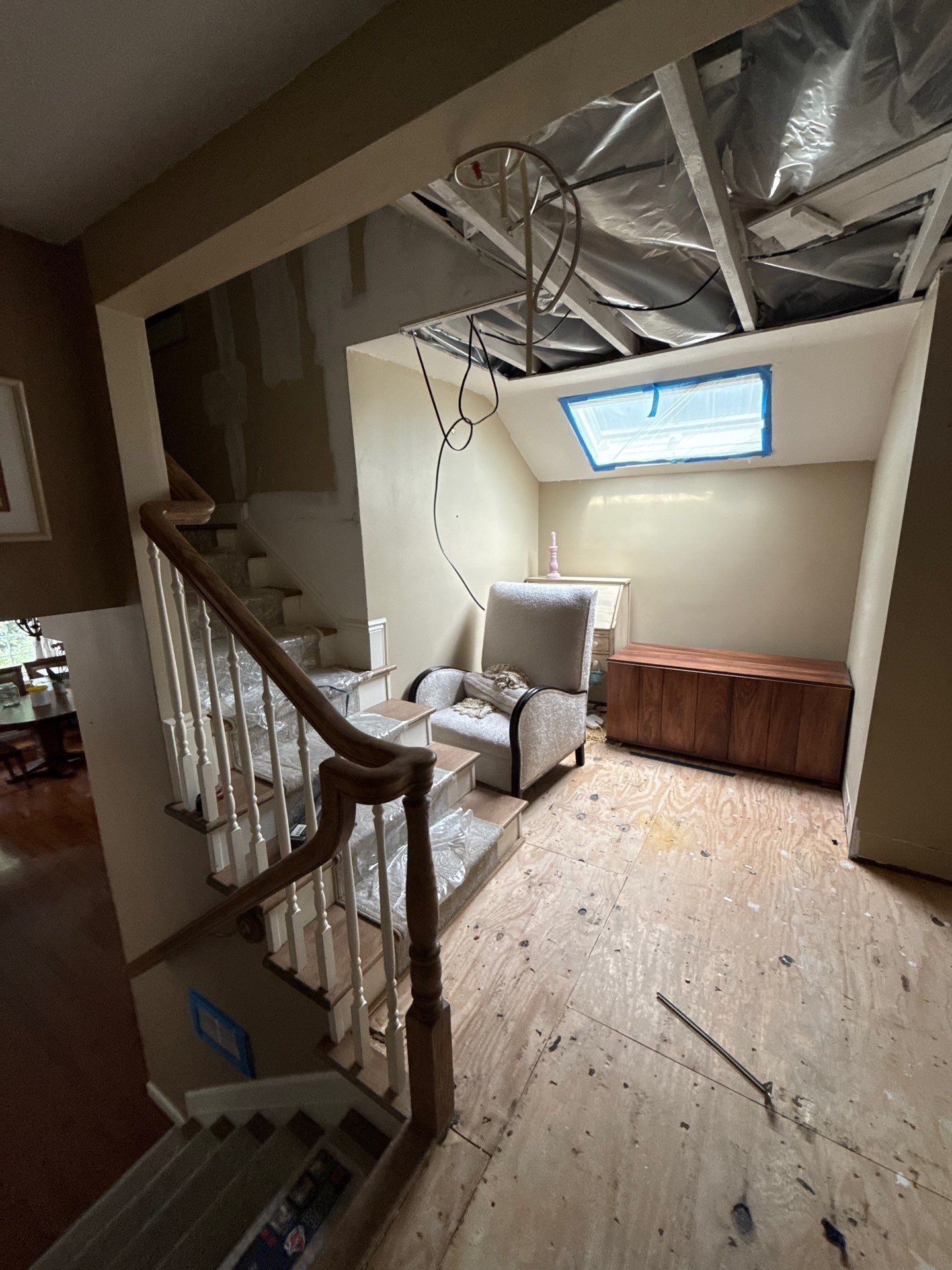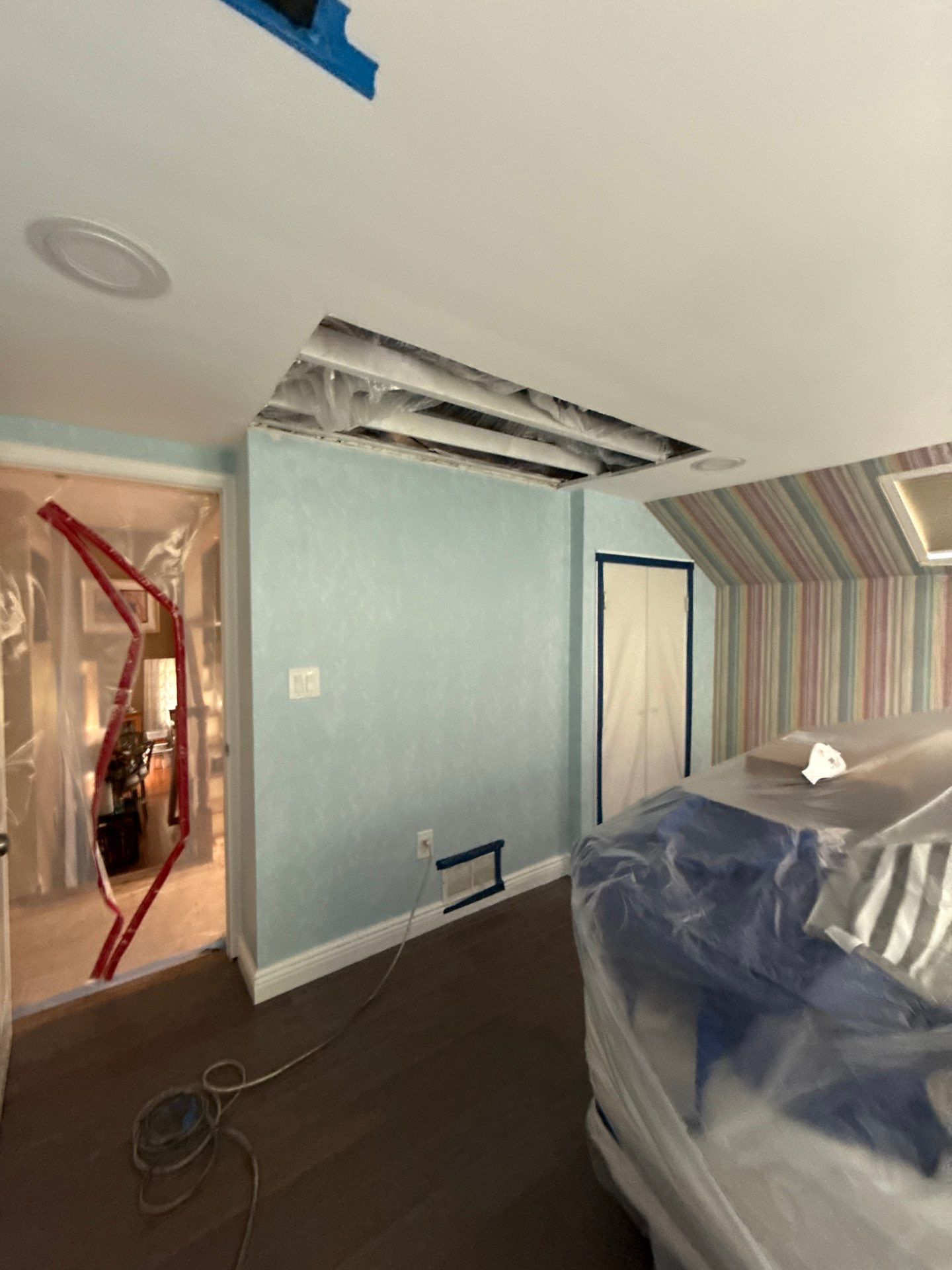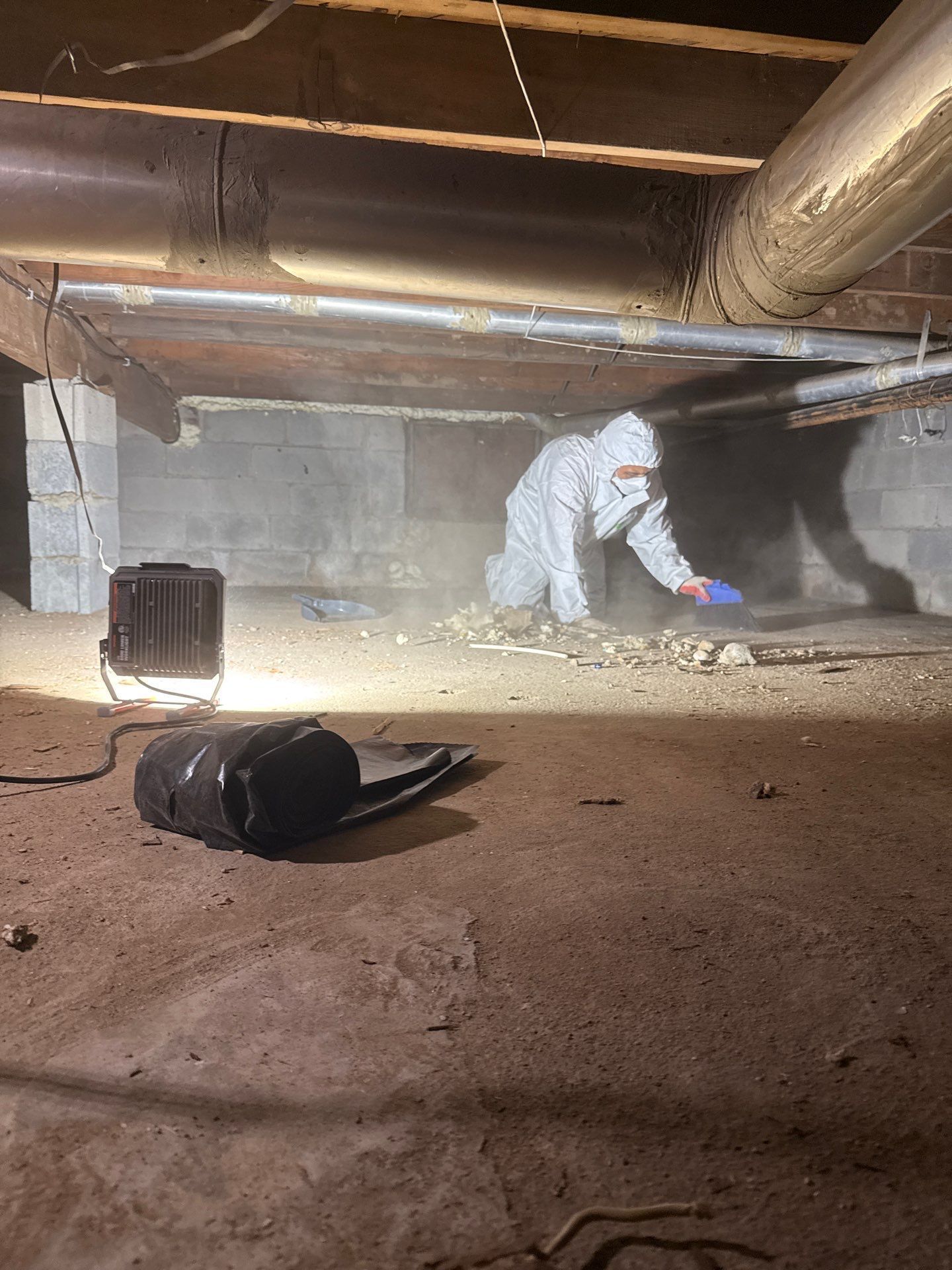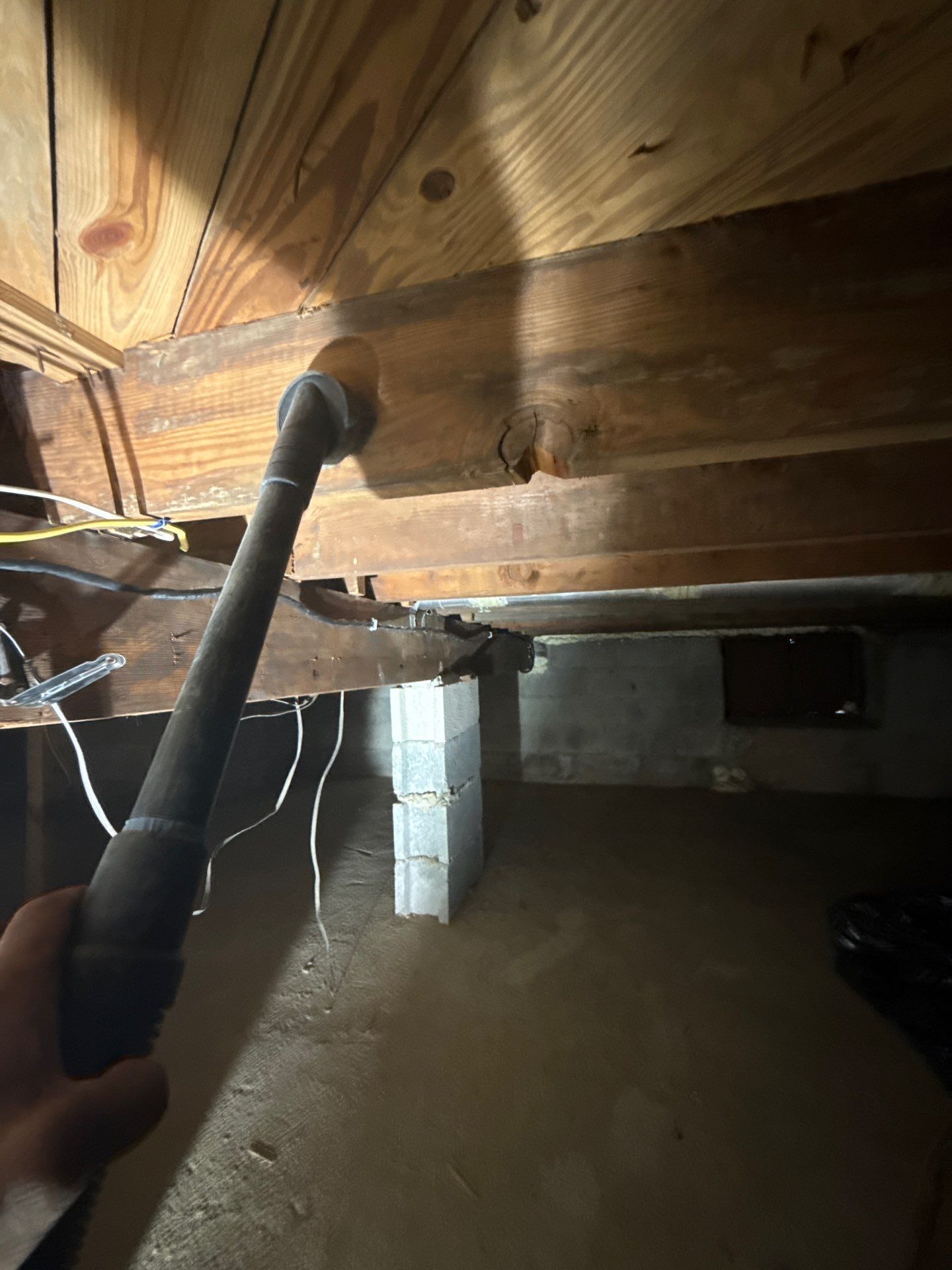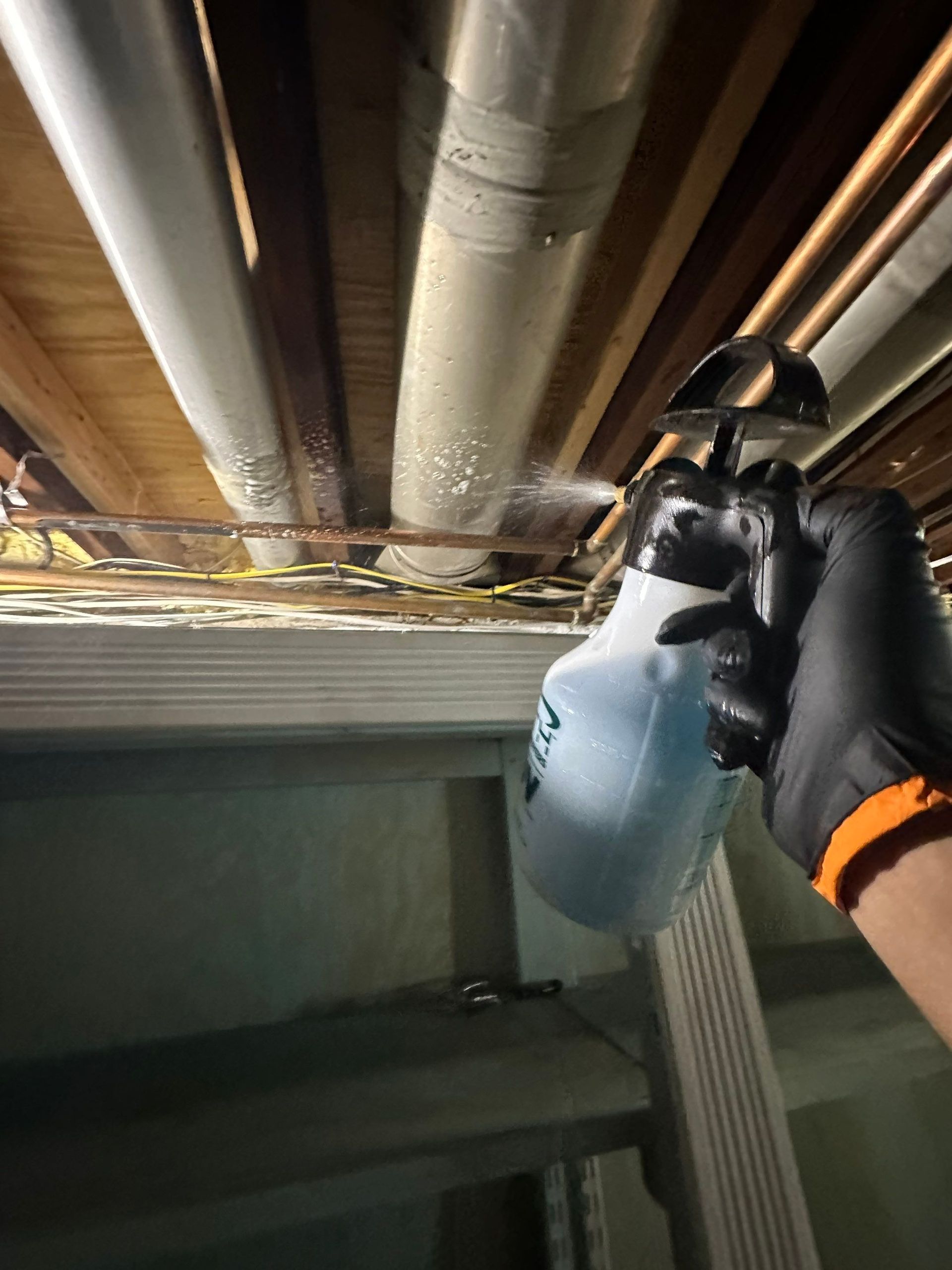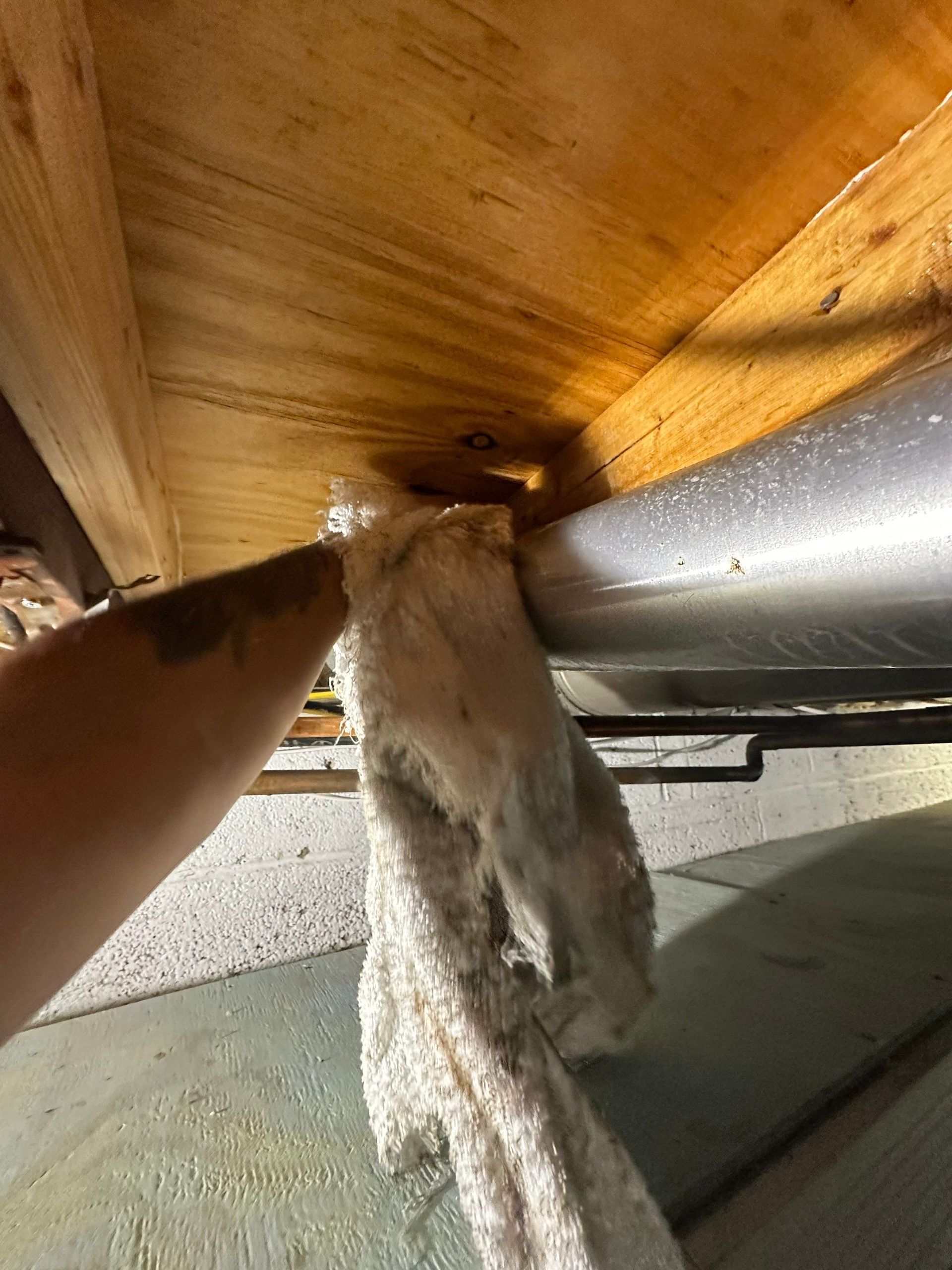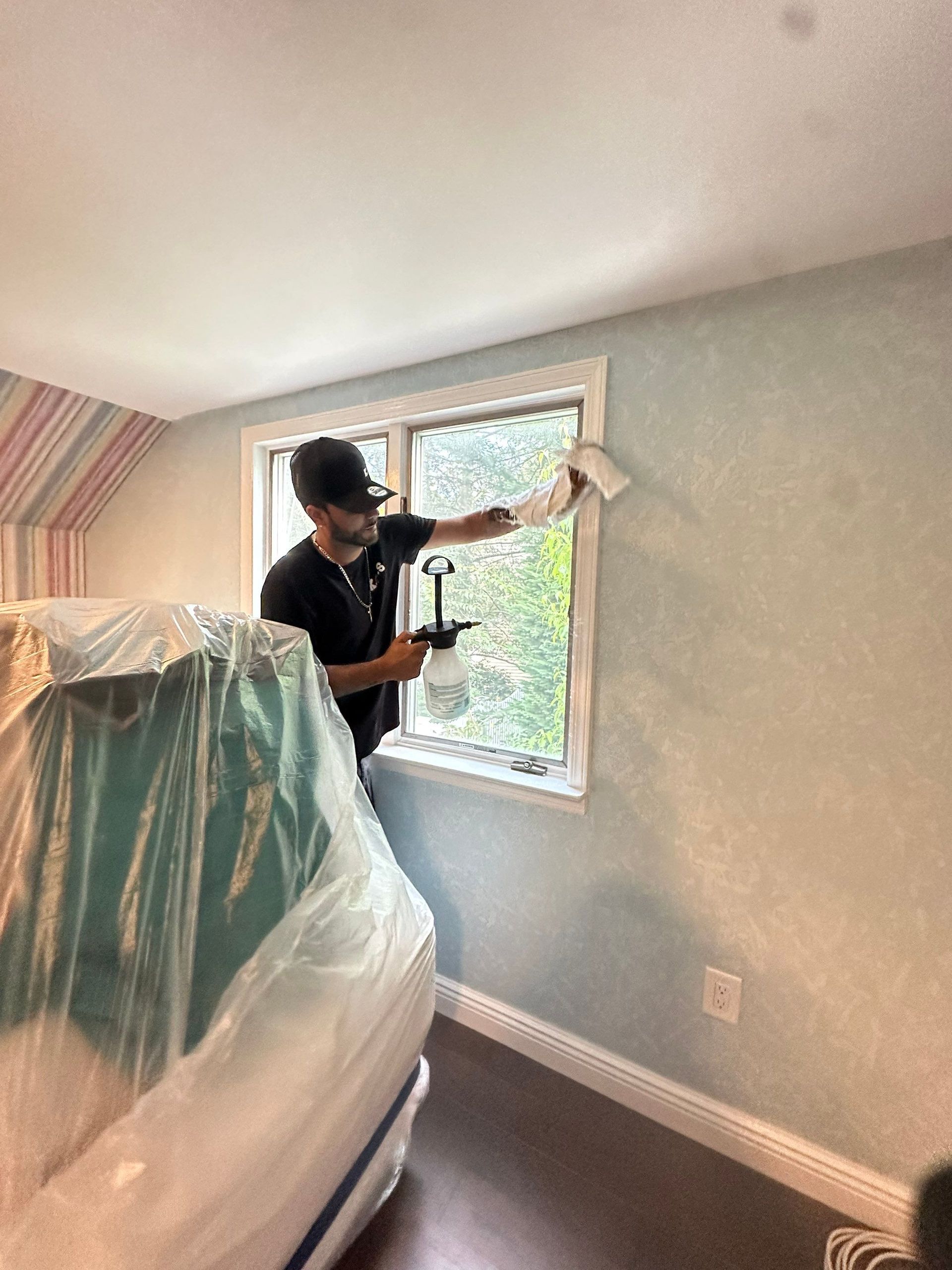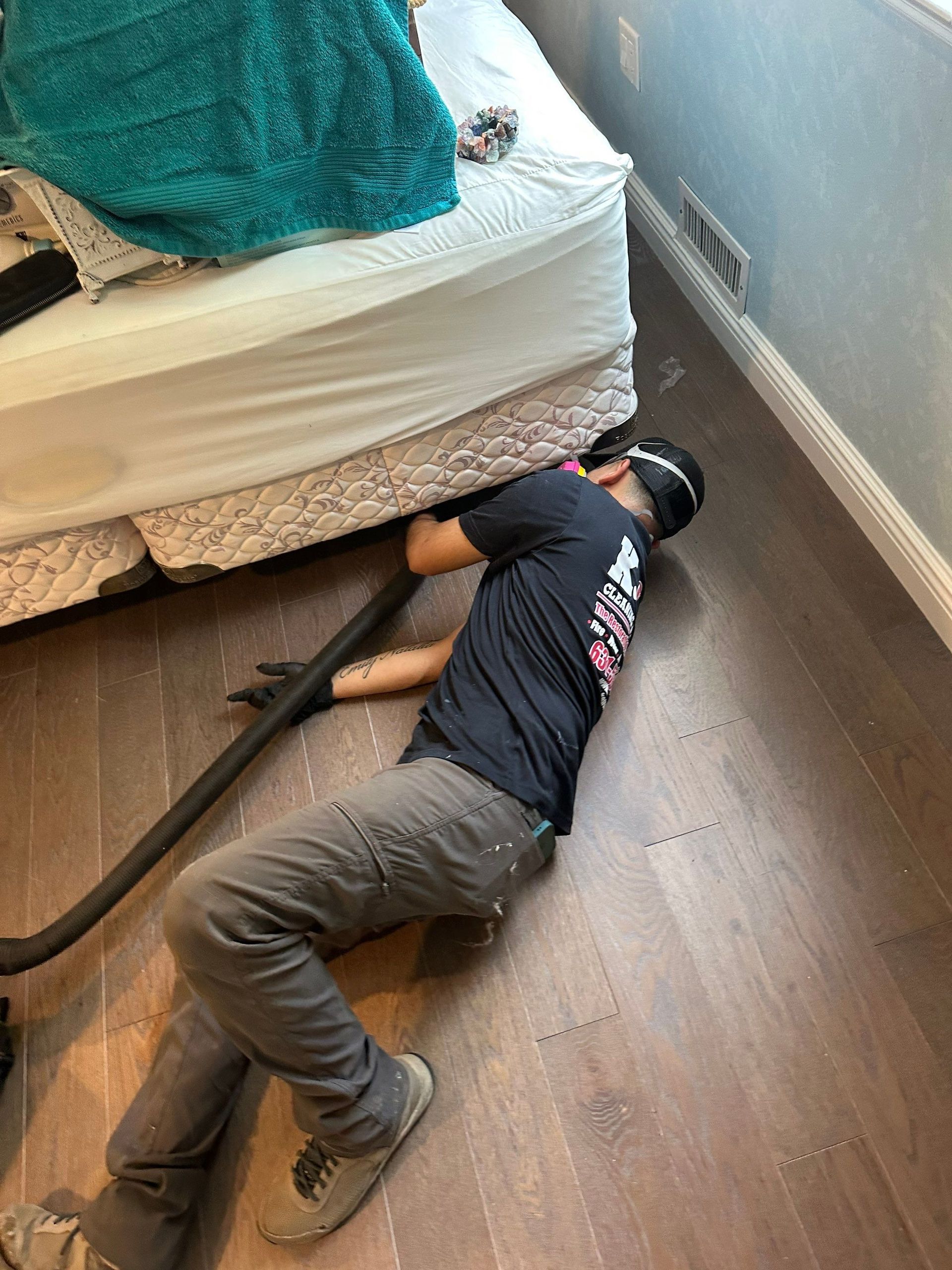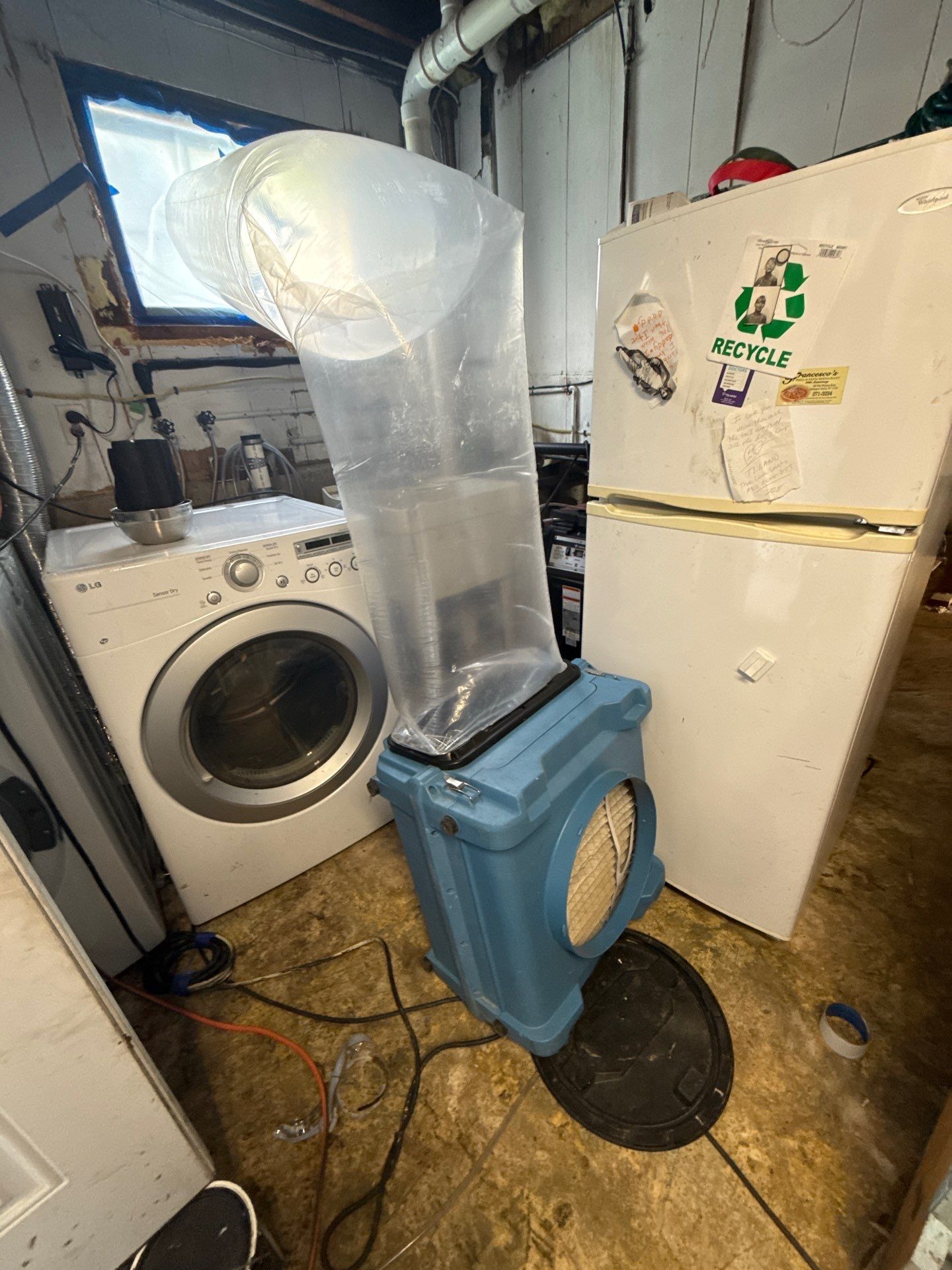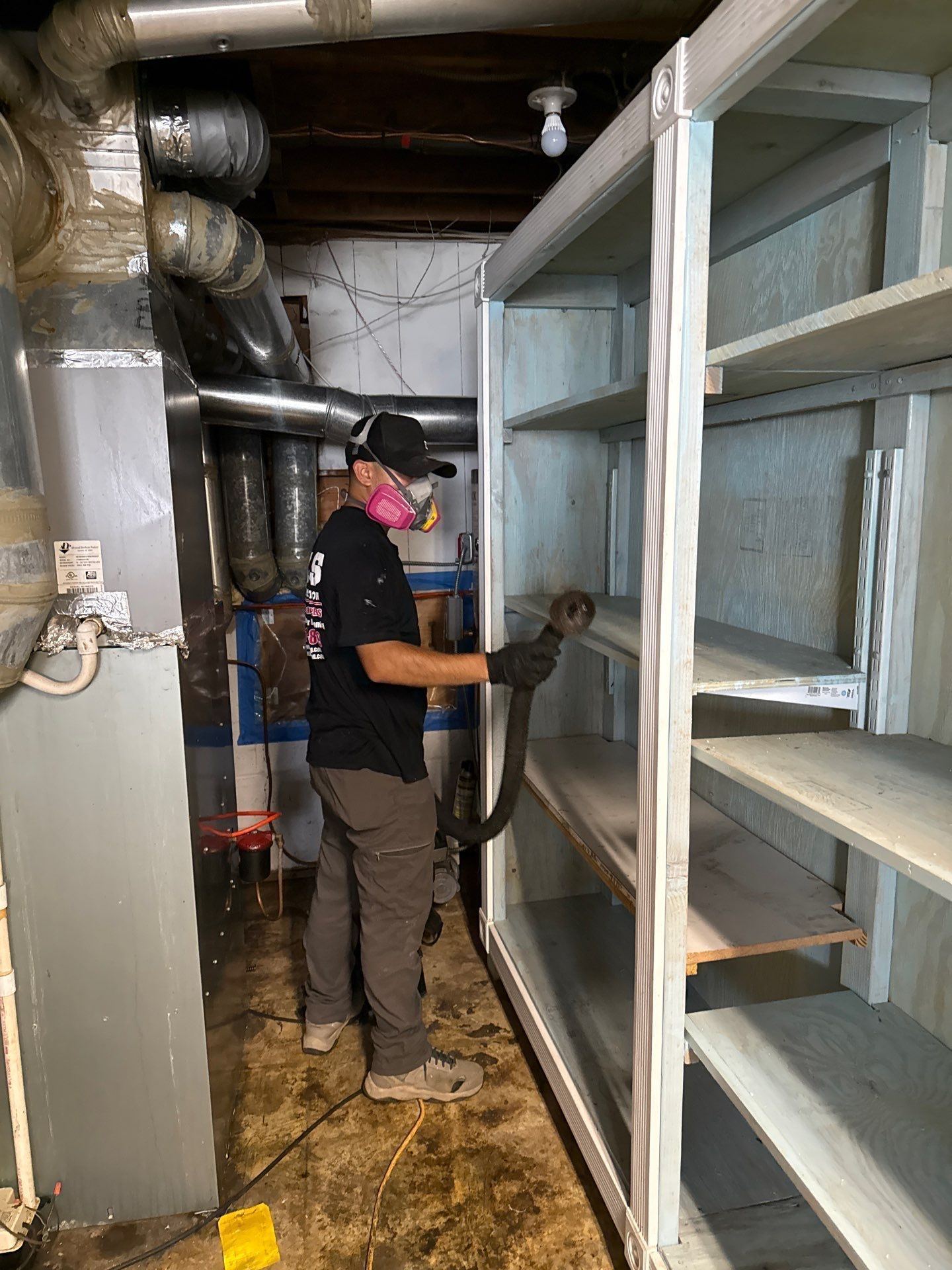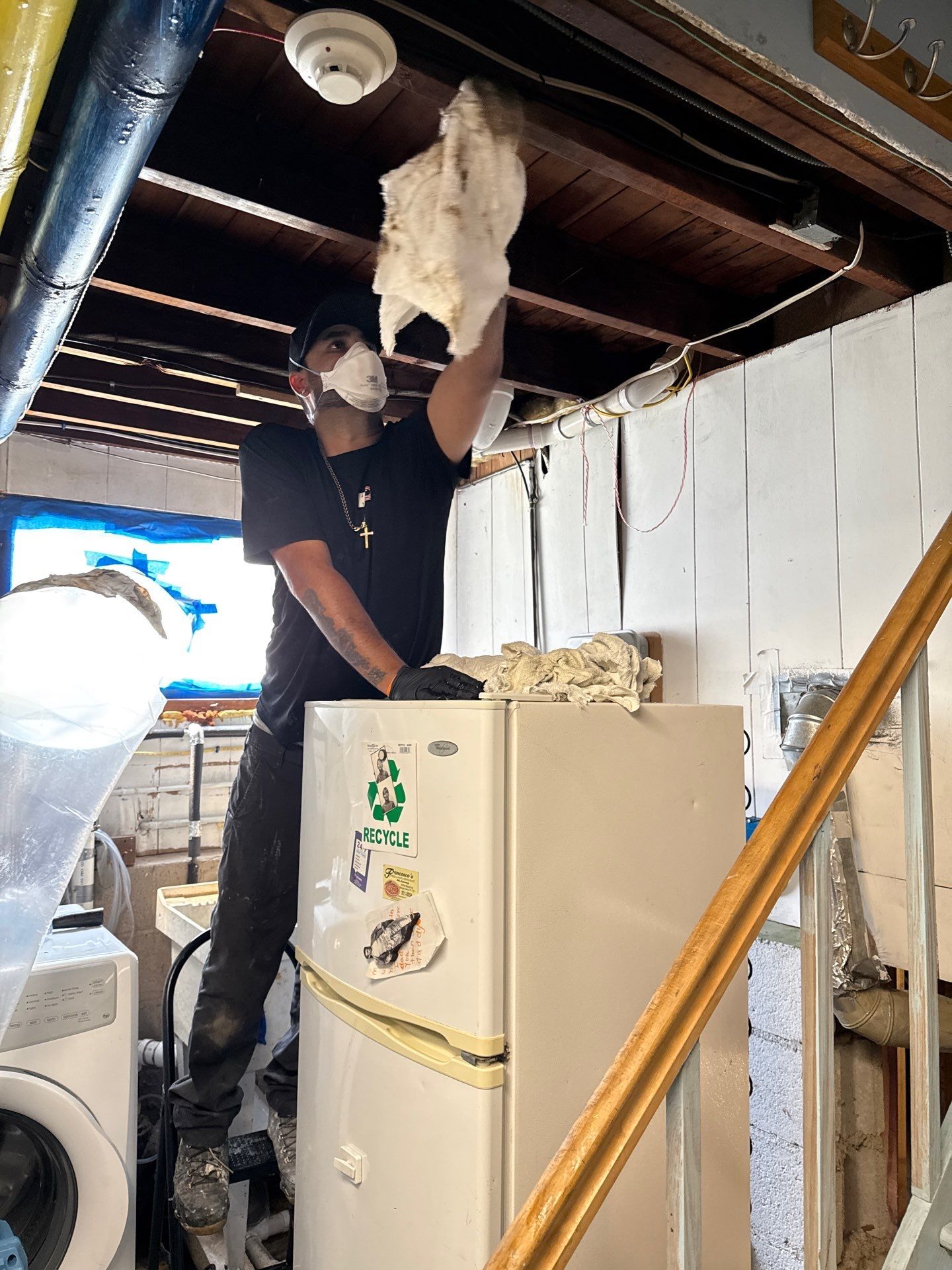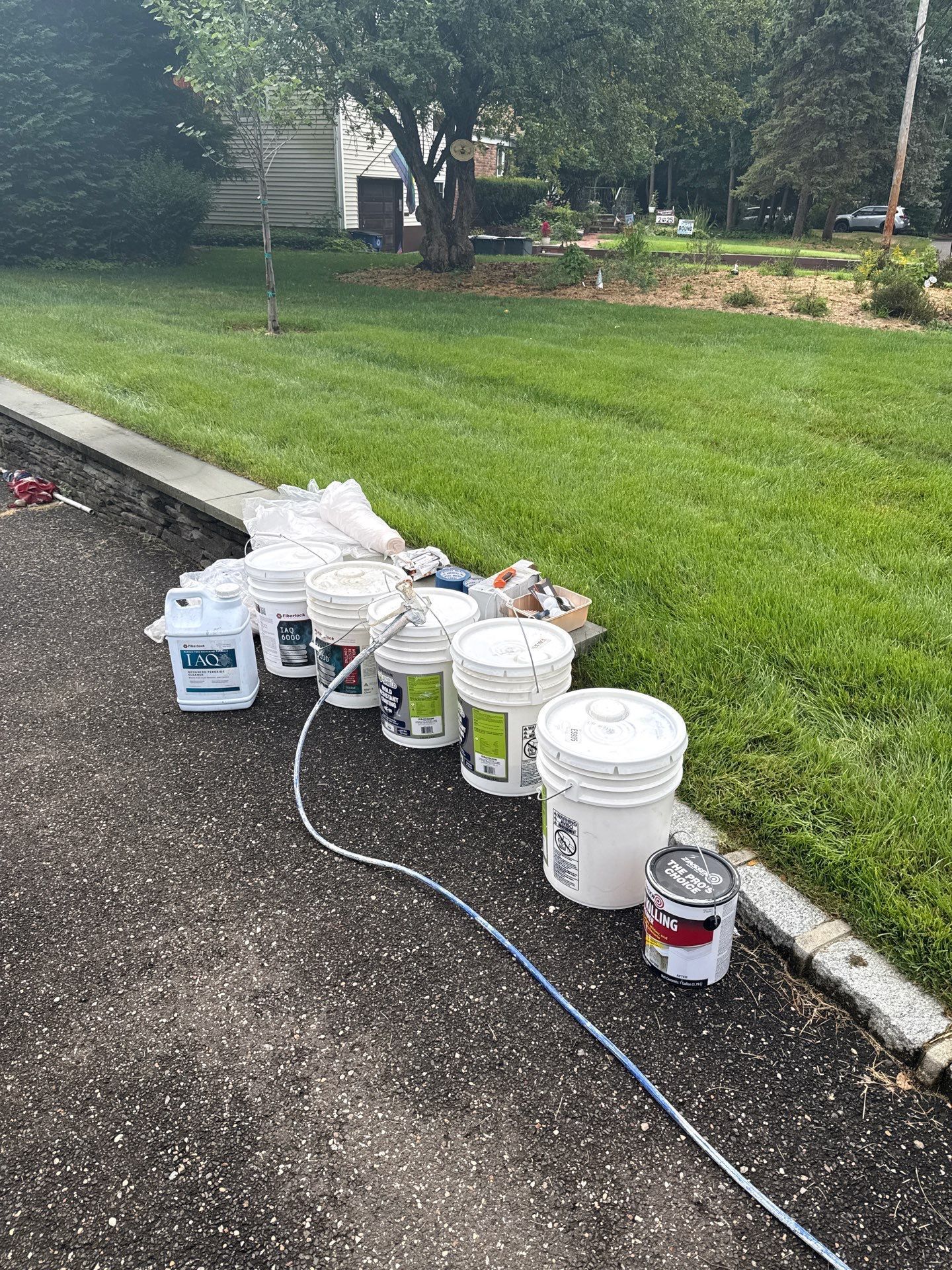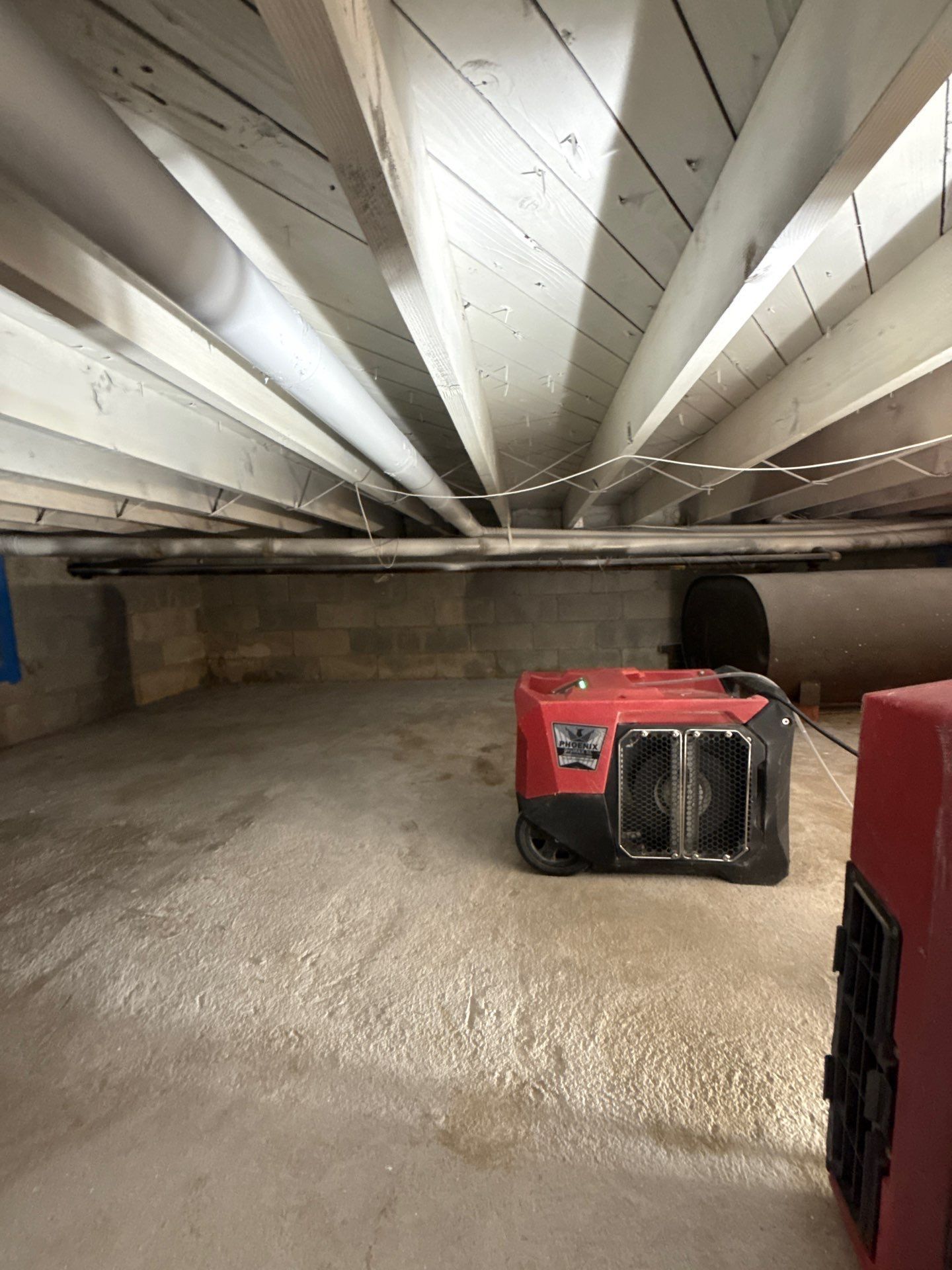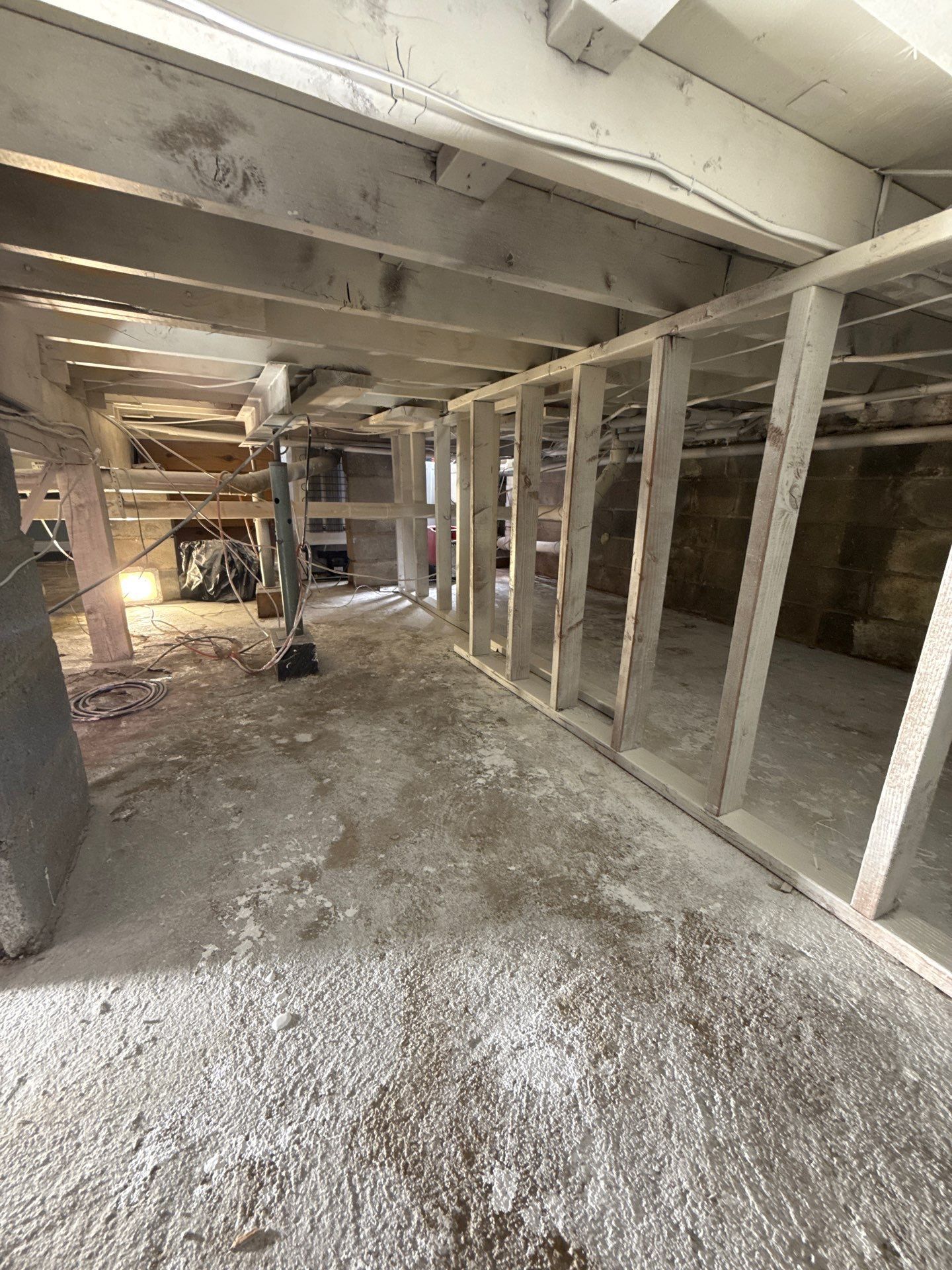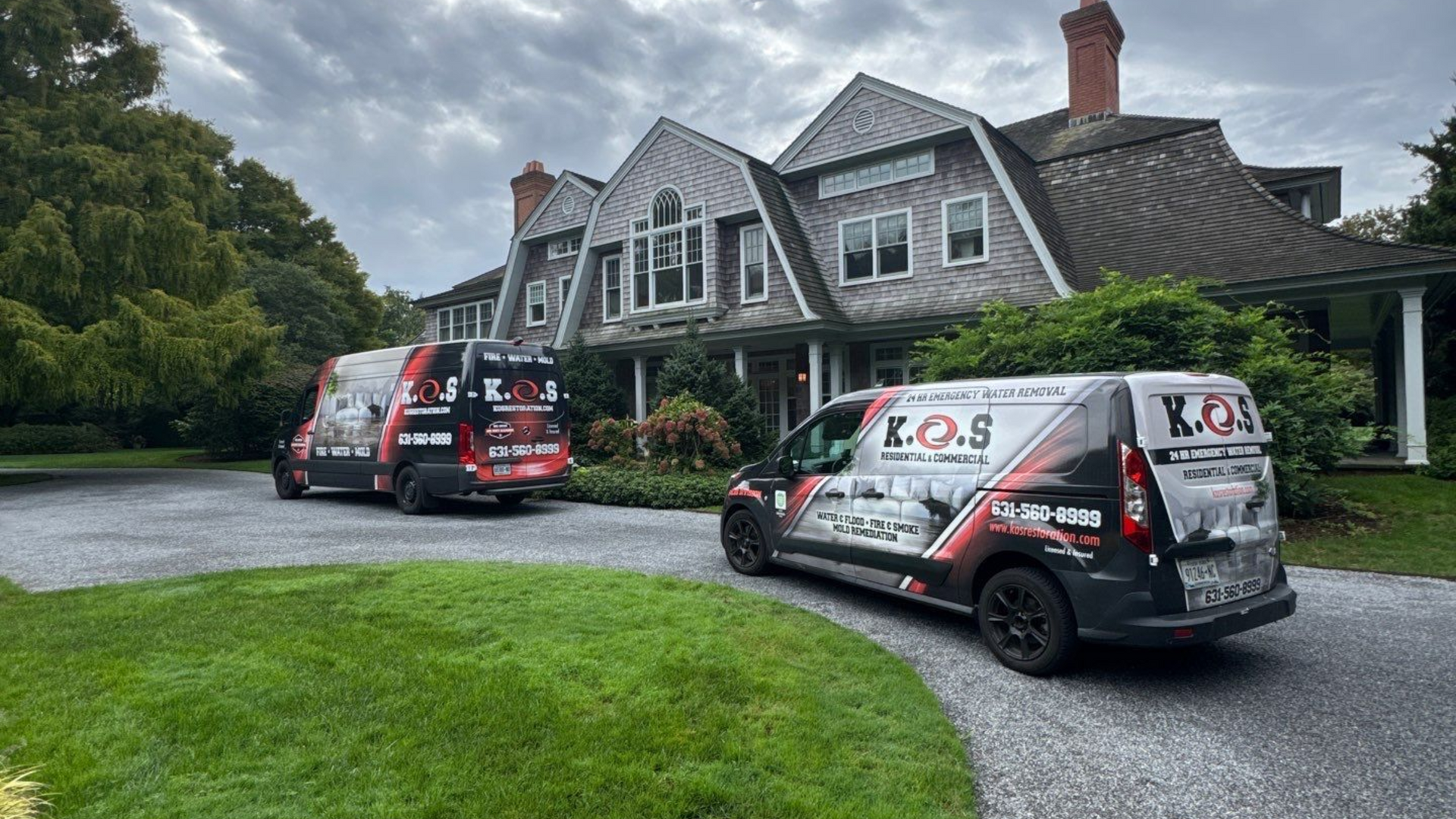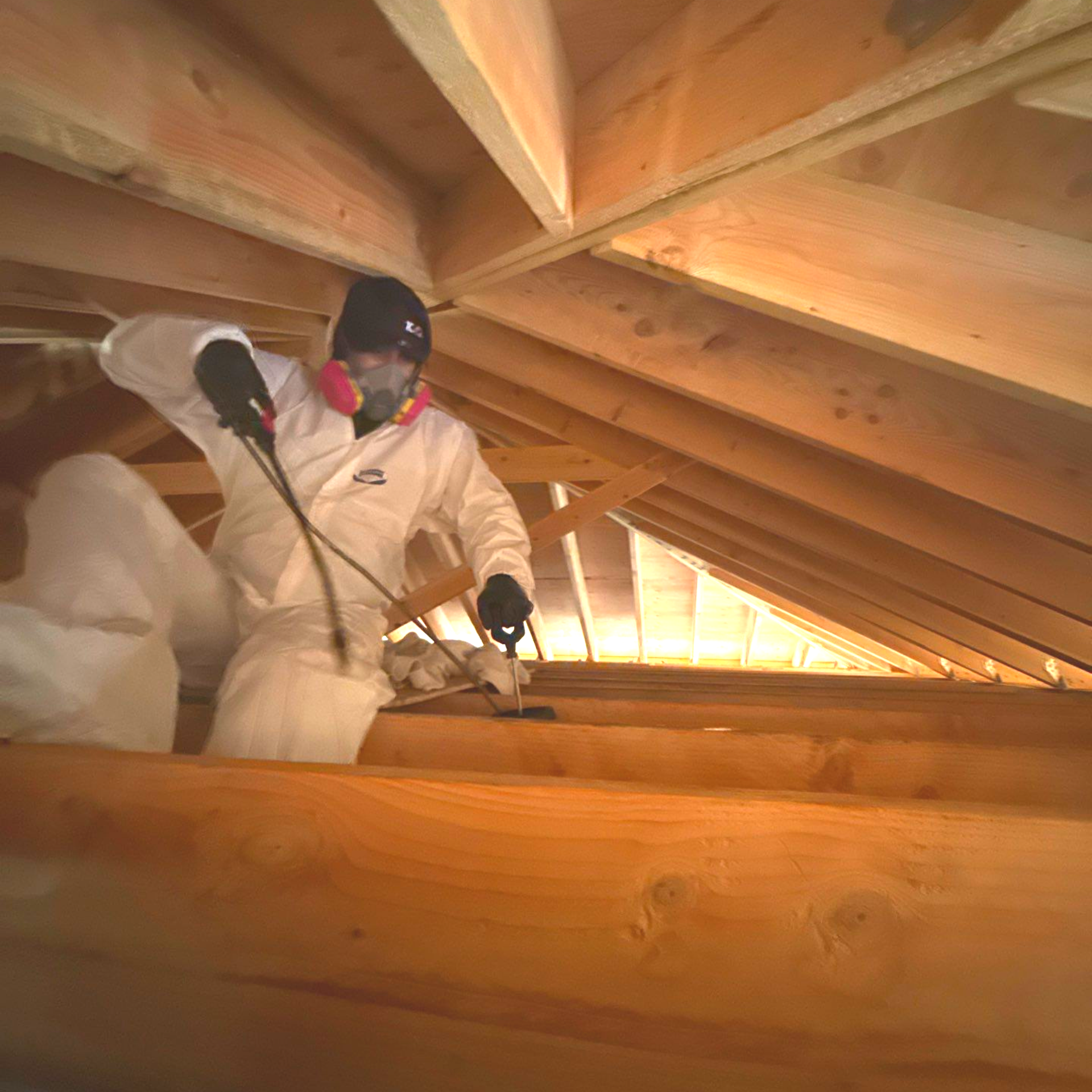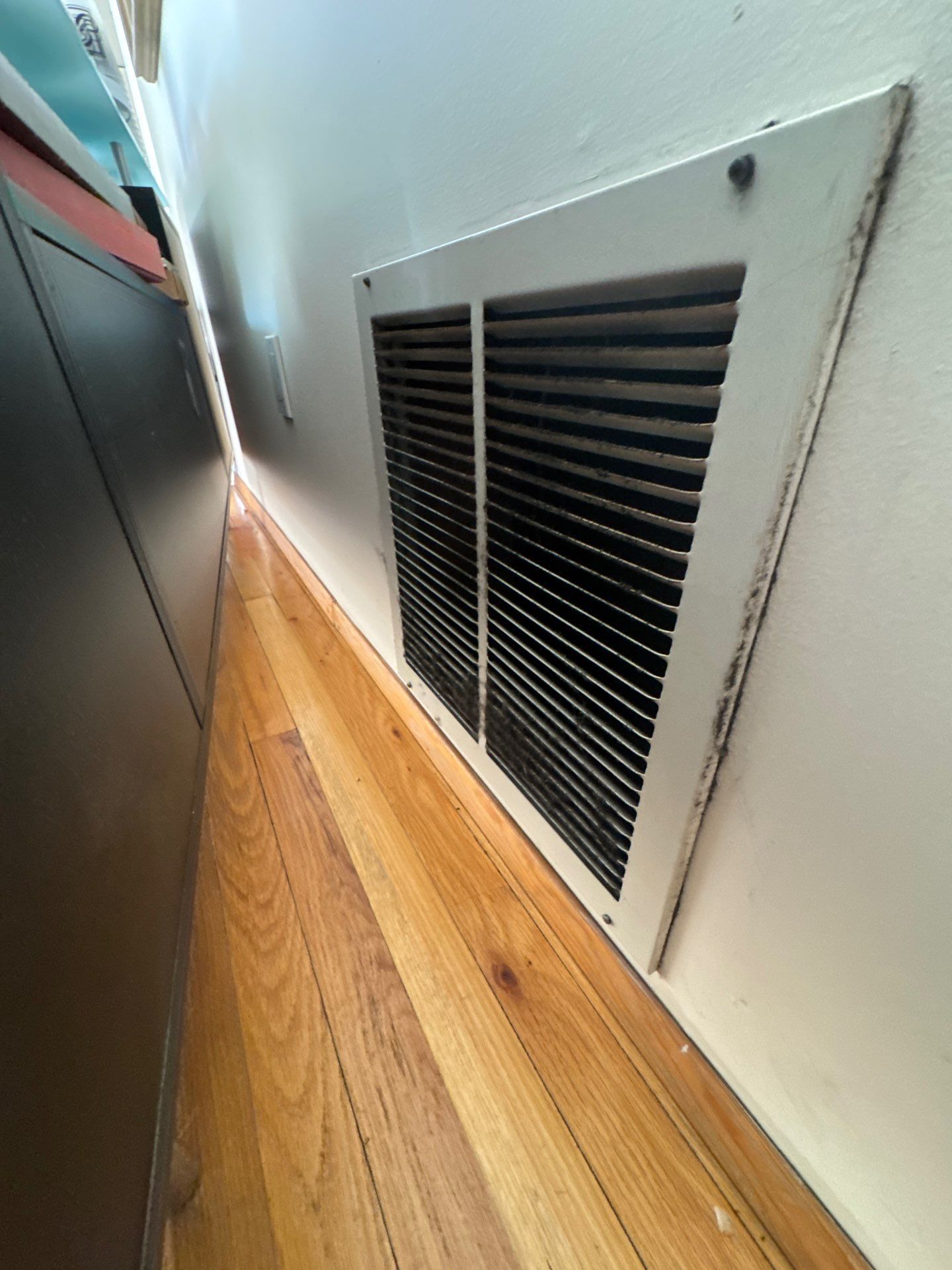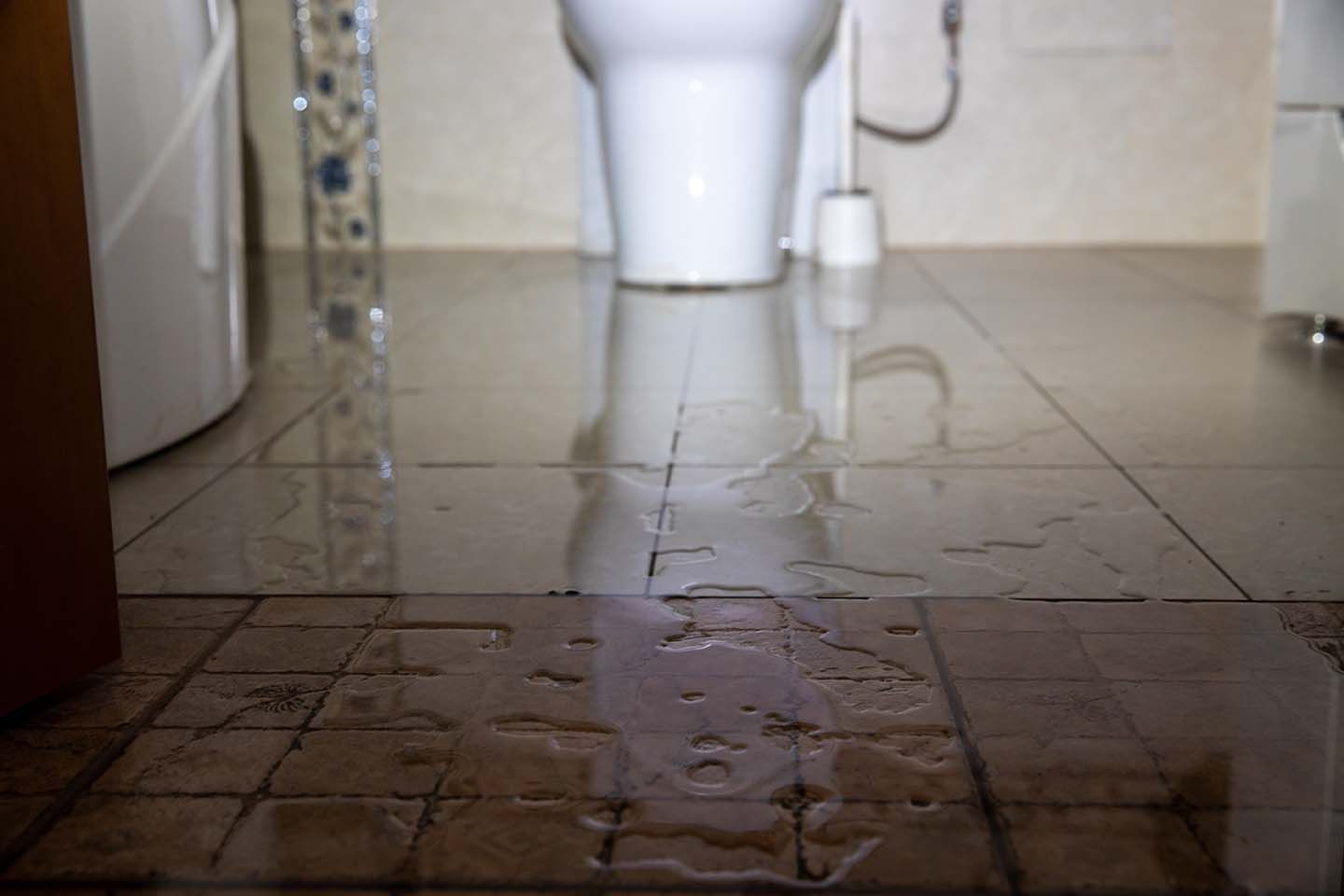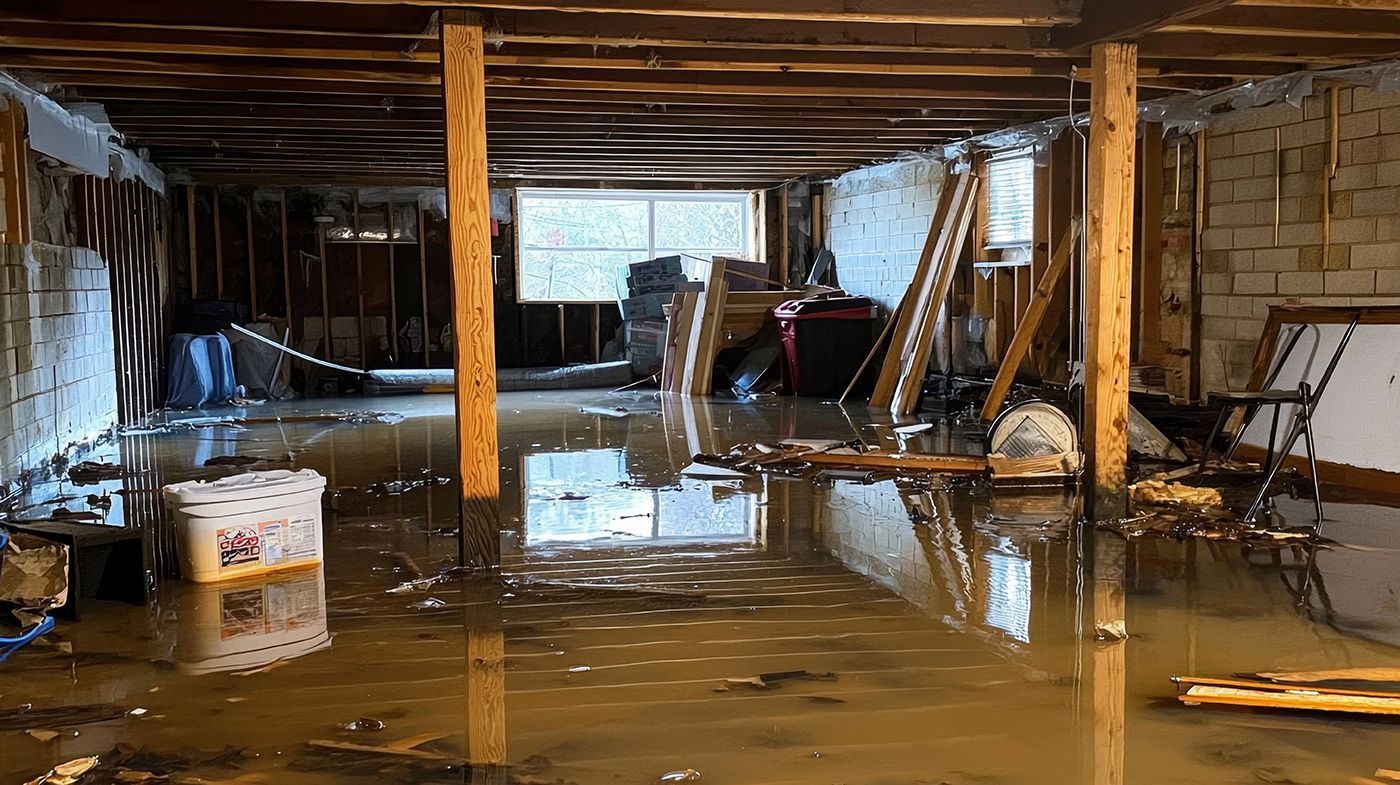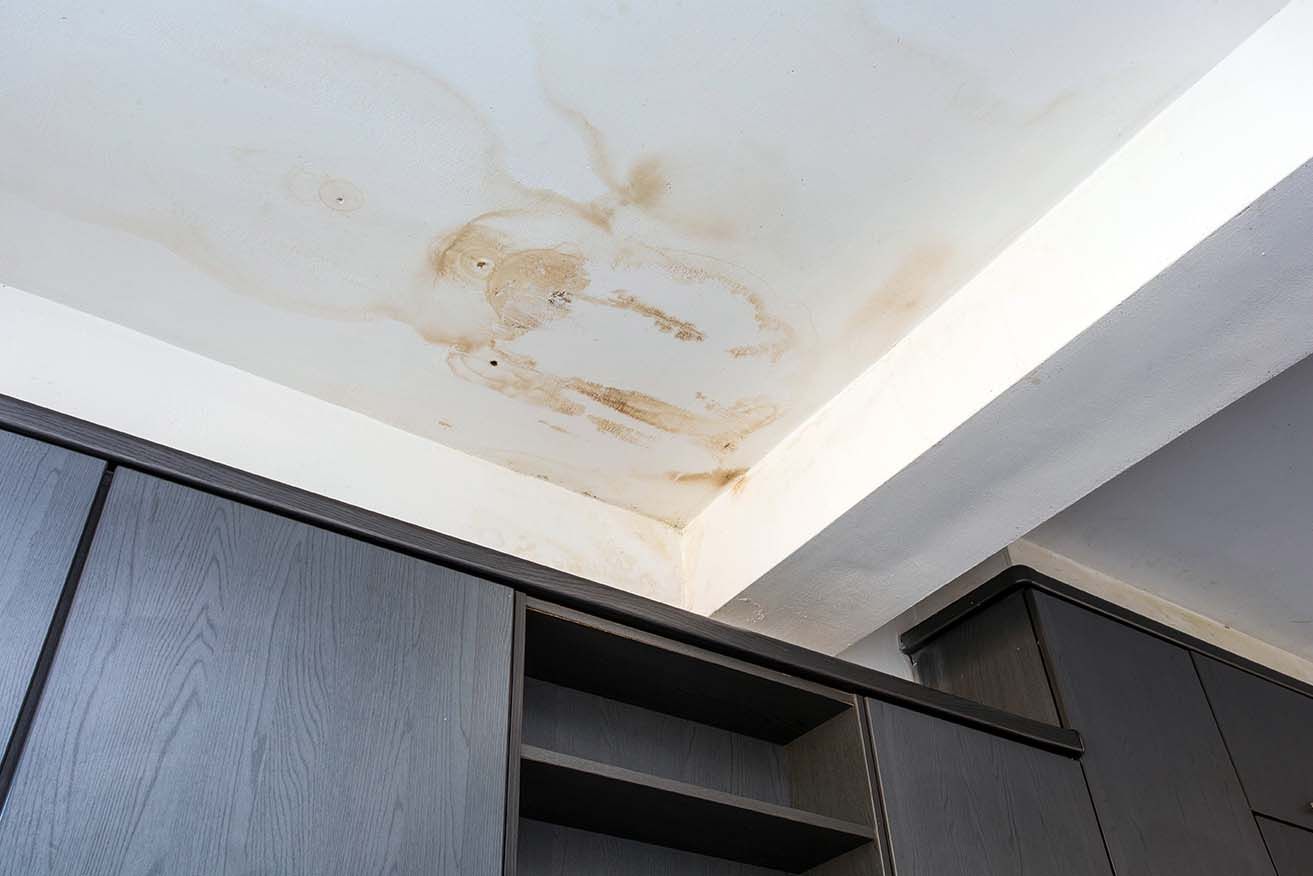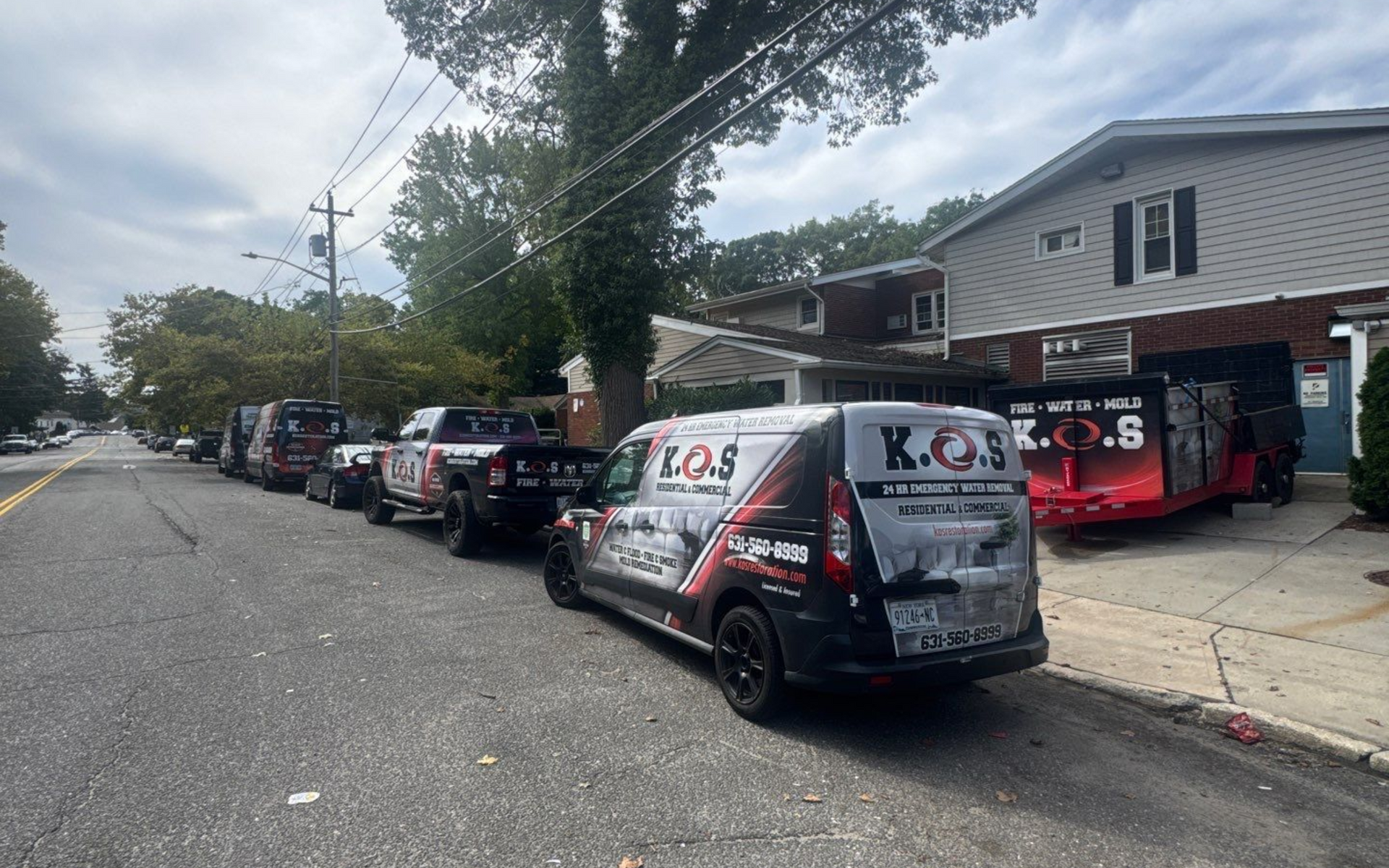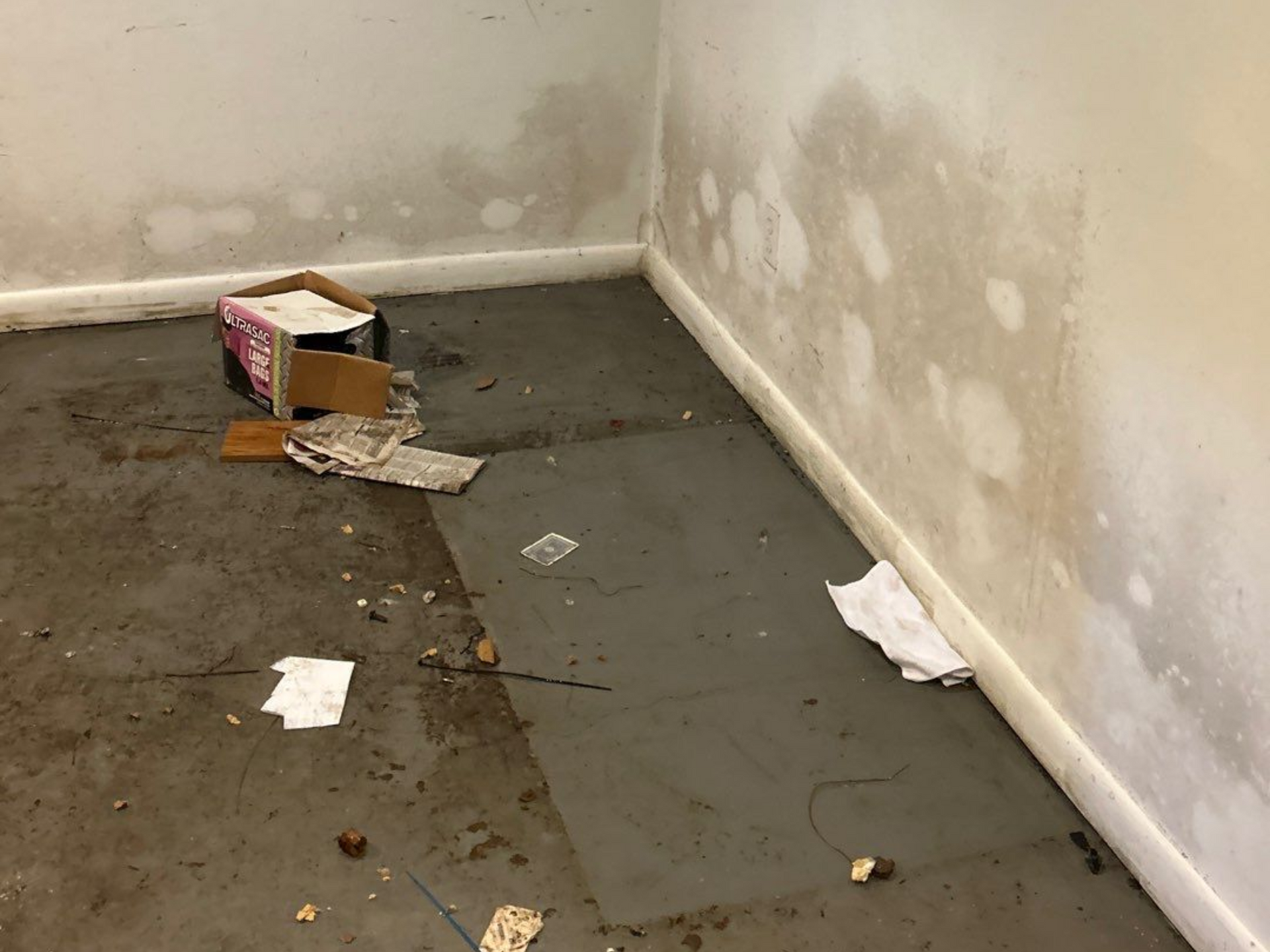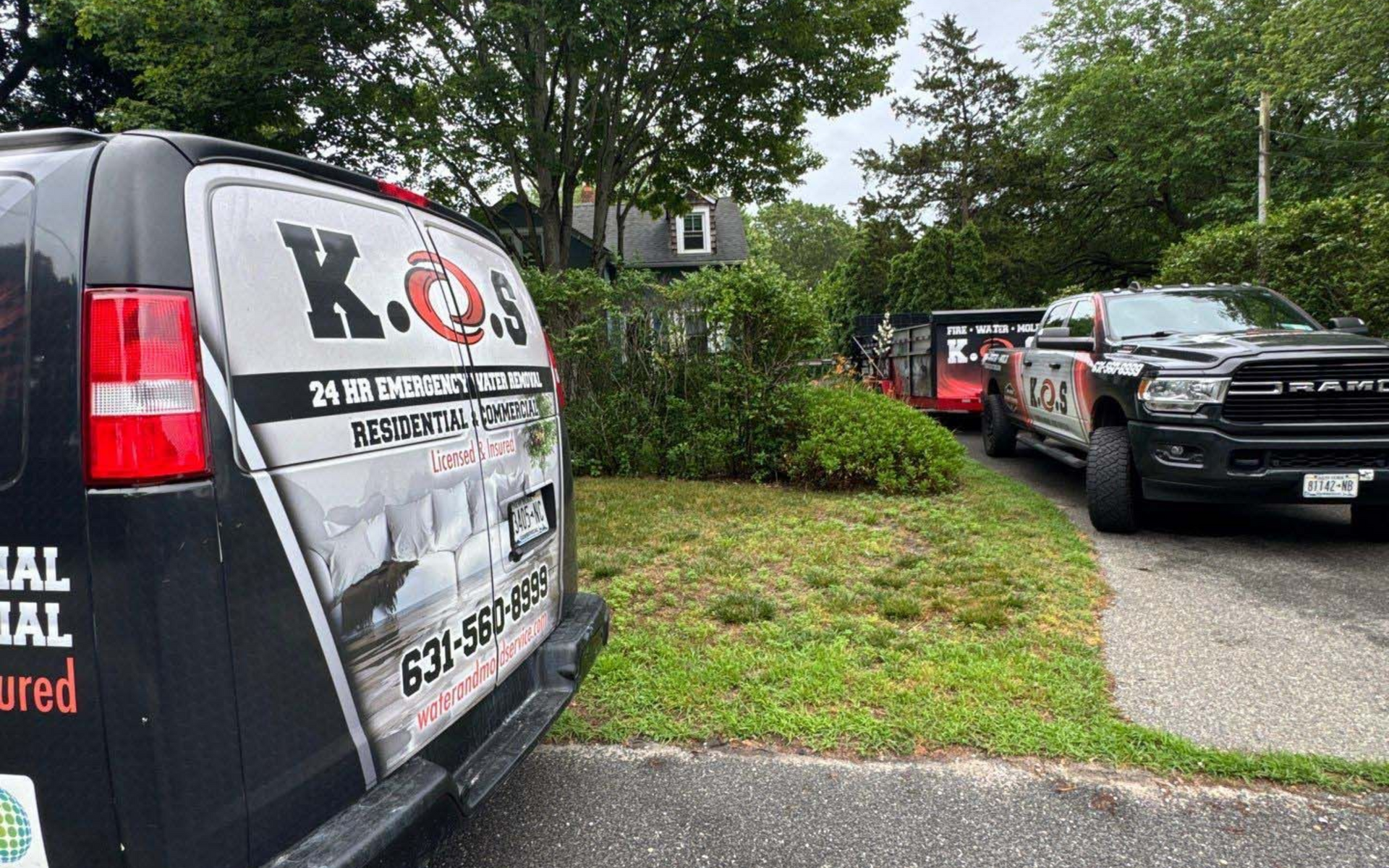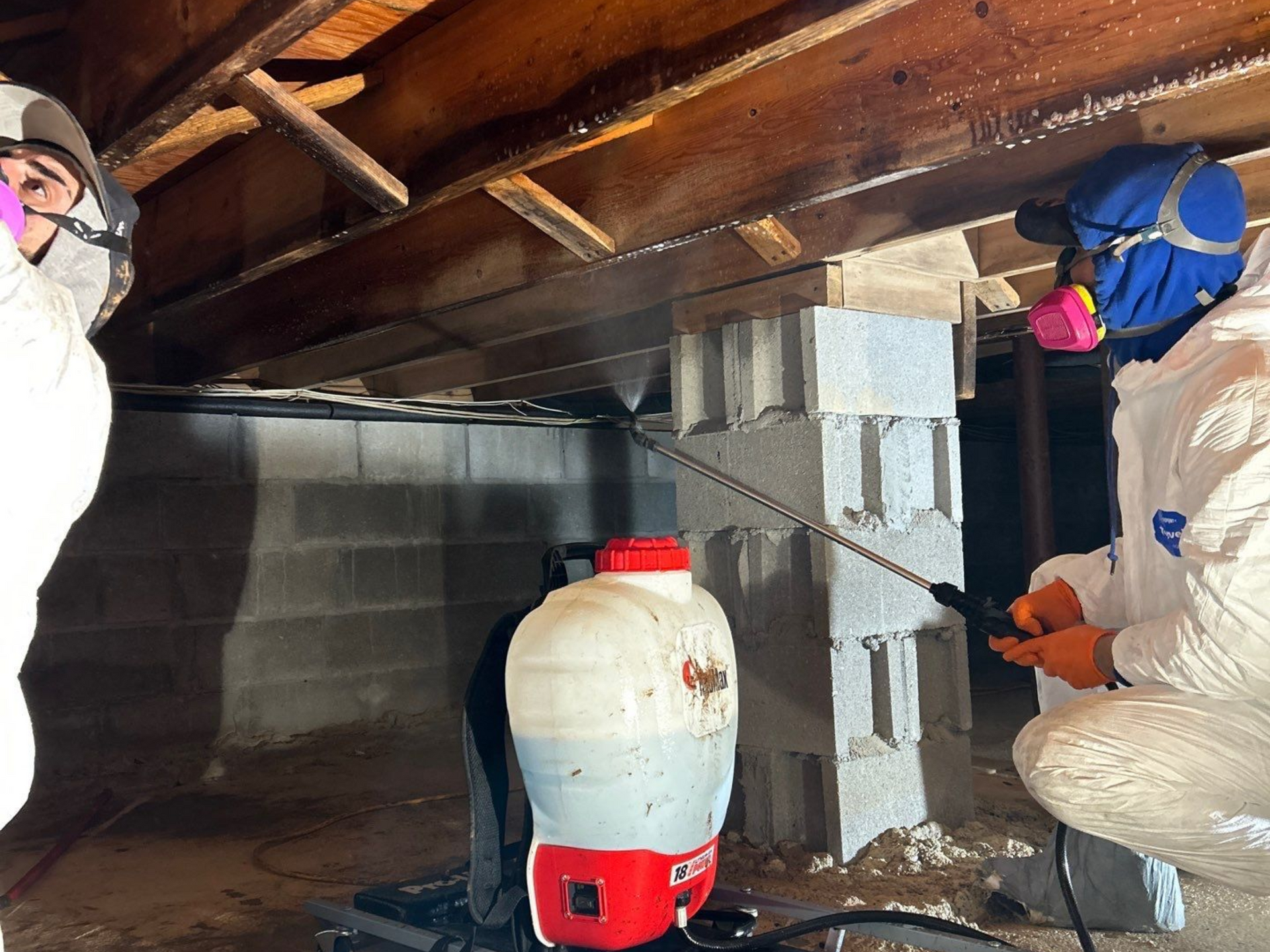Can an AC Leak Cause Water Damage & Mold?
Yes — an attic AC leak can absolutely cause water damage and mold, and it often happens faster than homeowners realize. When an air conditioning system leaks, the water doesn’t just sit where it drips. It can travel down through insulation, walls, ceilings, and even into crawlspaces — leaving behind hidden moisture that creates the perfect conditions for mold growth within just 24–48 hours.
That’s exactly what happened in a home we recently serviced in Melville, New York.
Real Example: AC Leak Water Damage in Melville, NY
A Melville homeowner called K.O.S. Restoration after discovering water damage caused by a leak in their attic AC unit. Unfortunately, by the time the leak was noticed, the damage had already spread:
- Water traveled through multiple levels of the home, damaging ceilings, insulation, walls, and flooring.
- Moisture reached the crawlspace, raising humidity and creating even more risk.
- Visible mold growth was found on several levels of the home.
Our IICRC-certified team quickly responded with a full remediation plan:
- Set up drying and dehumidifying equipment to stabilize humidity
- Removed unsalvageable building materials
- Installed containment areas on multiple levels to prevent mold spread
- Completed thorough HEPA vacuuming of mold spores
- Applied enzyme-based cleaning solutions to kill mold at the root
- Used air scrubbing equipment to capture airborne spores and prevent cross-contamination
- Finished with mold encapsulation paint in moisture-prone areas, including the entire crawlspace
By the time our team finished, the home was clean, dry, and mold-free — and most importantly, the homeowner had peace of mind knowing the problem was properly handled.
Why Do AC Leaks Lead to Water Damage and Mold?
AC units naturally produce condensation. Normally, that water drains away through a line. But when the line clogs, the drip pan overflows, or seals fail, water starts leaking into your home. Because it often happens in attics or hidden spaces, the water has time to soak into wood, insulation, and sheetrock before it’s noticed.
Add Long Island’s summer humidity, and mold can begin growing in as little as one to two days.
Signs an AC Leak May Have Caused Hidden Mold
Even if you don’t see water dripping, you might notice:
- Stains or bubbling on ceilings and walls
- Musty odors near vents or in rooms below the attic
- Higher-than-usual indoor humidity
- Allergy or asthma flare-ups
If you spot any of these warning signs, it’s time to take action.
What To Do If You Discover an AC Leak
- Shut off the AC unit to stop the leak.
- Don’t ignore the damage — hidden water can spread quickly.
- Call an IICRC-certified restoration company like K.O.S. Restoration to handle both the water damage and mold remediation.
- Ask about mold encapsulation for long-term protection in crawlspaces and other moisture-prone areas.
Why Long Island Homeowners Trust K.O.S. Restoration
Since 2006, K.O.S. Restoration has been helping Suffolk County homeowners recover from water damage, mold, fire, and sewage disasters. We’re proud to be:
- IICRC Certified in Water Damage and Mold Remediation
- Locally owned and trusted with over 250 five-star reviews
- Available 24/7 with 45-minute response times across Suffolk County
- Experts in working with insurance claims to ease the stress of recovery
We understand how overwhelming water damage and mold can be. Our mission is to restore not just your home, but your peace of mind.
Call Now for AC Leak Water Damage & Mold Cleanup
If you’re dealing with water damage from an AC leak — or suspect mold growth in your home — don’t wait. Acting fast can save you thousands in repairs and protect your family’s health.
📞 Call (631) 560-8999 for emergency service in Melville and across Suffolk County.
📍 K.O.S. Restoration – 11 Farber Drive Unit F, Bellport NY 11713
Related Services:
- Water Damage Restoration – Long Island
- Mold Remediation – Long Island
- Mold Encapsulation – Long Island


